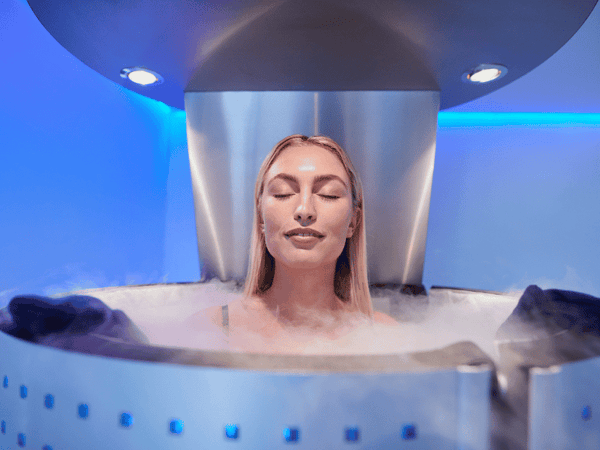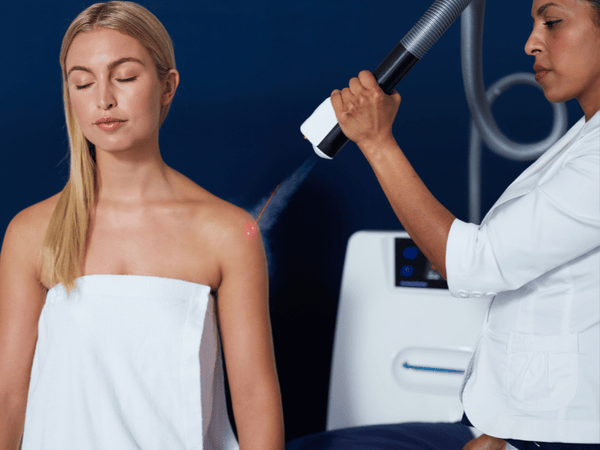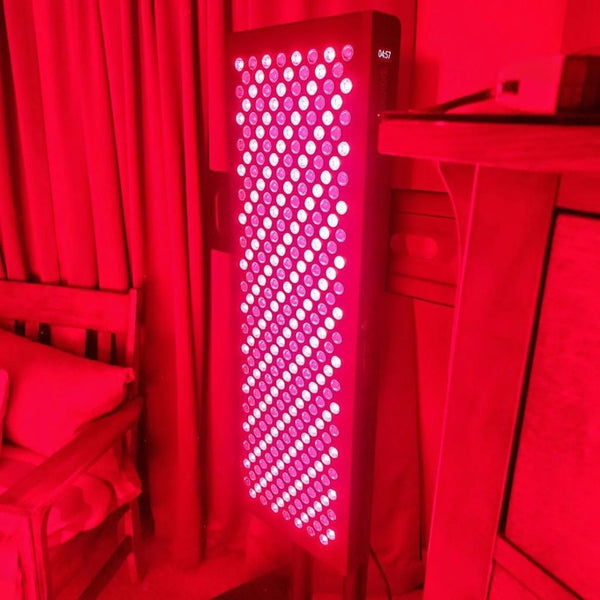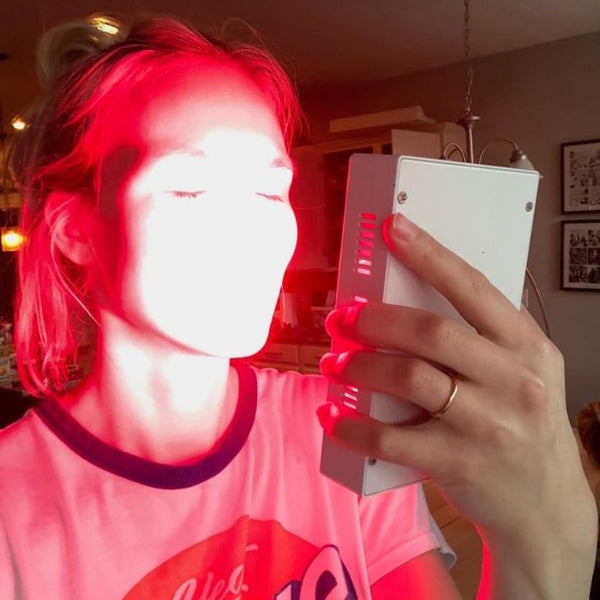
Cryotherapy Benefits
Cryotherapy, often referred to as cold water immersion therapy, has rapidly gained popularity as a cutting-edge wellness and recovery method. This therapeutic technique involves exposing the body to extremely cold or near-freezing temperatures for short periods, typically using liquid nitrogen or refrigerated cold water immersion in air. Originating from ancient practices and modernized in the late 20th century, cryotherapy has become a favored choice for athletes, celebrities, and health enthusiasts seeking to enhance their physical and mental well-being.
In this article, we will delve into the myriad benefits of cryotherapy, exploring how this innovative treatment can contribute to improved health, faster muscle recovery, and an overall enhanced quality of life. From reducing inflammation and treating muscle soreness and pain to boosting mood and metabolism, the advantages of cryotherapy are vast and varied. Join us as we uncover the science behind cryotherapy and reveal why it has become a go-to solution for those looking to optimize their health and performance.
How does cryotherapy work?
Cryotherapy, a technique that leverages the power of extreme cold, has become a popular method for promoting health and wellness. But how exactly does this chilly treatment work? Let's delve into the mechanics of cryotherapy and explore its various forms.
Explanation of the Cryotherapy Process:

Cryotherapy involves exposing the body to very low temperatures, usually between -200°F and -300°F, for a short duration, typically between two and four minutes. This exposure triggers the body's natural inflammatory response to these very cold temperatures, leading to a series of physiological reactions:
-
Vasoconstriction: Blood vessels constrict to preserve core body temperature, reducing blood flow to the skin and extremities.
-
Endorphin Release: The body releases endorphins, natural pain relievers, and mood enhancers, providing a sense of well-being.
-
Reduced Inflammation: The cold temperature helps decrease inflammation by reducing the activity of pro-inflammatory cytokines.
-
Metabolic Boost: The body's effort to maintain its core temperature can lead to an increase in metabolic rate.
Types of cryotherapy:
1. Whole Body Cryotherapy (WBC):

In WBC, the individual enters a cryogenic chamber, or cryosauna, where their entire body, except for the head, is exposed to ultra-cold air. This form of whole body cryotherapy is popular among many athletes for its potential to enhance recovery and reduce muscle soreness.
2. Partial Body Cryotherapy (PBC):

PBC involves exposing the whole body, or only a specific part of the whole body, to cold temperatures, often using a localized whole body cryotherapy machine or device. This targeted approach to adjunct treatment is commonly used to reduce pain and manage specific injuries or localized pain.
3. Local Cryotherapy:

Similar to PBC, local cryotherapy focuses on a particular area of the body, but with even more precision. It's typically used for spot treatments, such as reducing swelling or numbing a painful area, and is often applied using a handheld device that directs cold air or liquid nitrogen to the affected area or region.
Cryotherapy for Specific Conditions
Cryotherapy has garnered attention for its potential benefits in managing various health conditions. From joint disorders, cancer cells to mental health issues, depressive and anxiety disorders, let's explore how this cold therapy can be applied to different areas of health and wellness.
Cryotherapy for Arthritis and Joint Disorders:
Arthritis and joint disorders can cause significant pain and discomfort, often leading to reduced mobility and quality of life. Cryotherapy has been found to be an effective treatment for these conditions, as the cold temperatures can reduce inflammation and swelling in the joints. Regular cryotherapy sessions can help alleviate pain, improve joint function, and enhance overall comfort for individuals with arthritis or other joint-related issues.
Cryotherapy in Sports Medicine:
In the realm of sports medicine, cryotherapy is a popular tool for aiding in the recovery of athletes. The cold exposure helps to reduce muscle soreness and accelerate the healing of soft tissue injuries. By decreasing inflammation and promoting blood circulation, cryotherapy can help athletes recover more quickly from an intense exercise during training or competition, allowing them to maintain peak performance levels.
Cryotherapy for Skin Conditions (e.g., Eczema, Psoriasis):
Cryotherapy has also shown promise in the treatment of certain skin conditions, such as eczema and psoriasis. The cold temperatures can soothe irritated skin, reduce inflammation, and alleviate itching. For individuals with these chronic skin conditions, regular cryotherapy sessions can provide much-needed relief and help manage symptoms more effectively.
Cryotherapy for Mental Health (Anxiety, Depression):
Emerging research suggests that cryotherapy may have positive effects on mental health and mood disorders, particularly for those dealing with anxiety disorders and depression. The endorphin release triggered by cold exposure can boost mood and provide a sense of well-being. Additionally, the stress-reducing effects of cryotherapy can help individuals manage anxiety and depressive symptoms, contributing to improved mental health and emotional balance.
Disclaimer: As with any therapeutic intervention, it's important to consult with a healthcare professional before incorporating cryotherapy into your treatment regimen.
The Cryotherapy Experience
Embarking on a cryotherapy journey can be both exciting and a bit daunting. Here's what you need to know to prepare for your first session and ensure a safe and comfortable experience:.
What to Expect During a Cryotherapy Session:

1. Pre-Session Preparation: Before entering the cryotherapy chamber, you'll be provided with protective clothing, typically including gloves, socks, and slippers, to protect your skin's aging extremities from the extreme cold.
2. Entering the Chamber: You'll step into the cryotherapy chamber, which may be a full-body unit with your head exposed or an enclosed unit with a window for communication.
3. The Cold Exposure: The session typically lasts between two to four minutes. You'll experience a blast of extreme cold air, with temperatures dropping as low as -200°F to -300°F. It's normal to feel a tingling sensation on your skin.
4. Post-Session Warm-up: After the session, you'll exit the chamber and engage in light exercise or use a stationary bike to warm up your whole body and stimulate circulation.
Preparing for Your First Cryotherapy Treatment:
-
Medical Clearance: Consult with your healthcare provider to ensure cryotherapy is safe for you, especially if you have any underlying health conditions.
-
Hydrate: Drink plenty of water before your session to stay hydrated.
-
Dress Appropriately: Wear dry, loose-fitting clothing. Remove any metal jewelry or accessories.
-
Mental preparation: It's normal to feel nervous about the cold. Try to relax and focus on the potential benefits of the treatment.
Safety Considerations and Potential Side Effects:
-
Time Limit: Adhere to the recommended session duration to avoid overexposure to the cold.
-
Supervision: Ensure that a trained professional is monitoring the session to manage any safety concerns.
-
Skin Sensitivity: Some individuals may experience redness or mild skin irritation, which typically resolves shortly after the session.
-
Medical Conditions: People with certain conditions, such as Raynaud's disease, cardiovascular issues, or pregnancy, should avoid cryotherapy.
-
Rare Side Effects: In rare cases, cryotherapy can lead to frostbite or nerve damage if not properly administered.
Red Light Therapy: An Alternative Treatment
While cryotherapy has gained popularity for its cold-based healing properties, red light therapy (RLT) has emerged as an alternative treatment with its own unique health benefits. Let's explore the world of red light therapy, how it compares to other cryotherapy methods, and how the two can complement each other.
Introduction to Red Light Therapy and Its Benefits:
Red light therapy, also known as photobiomodulation, involves the use of low-level red or near-infrared light to stimulate cellular function and promote healing. Unlike cryotherapy, which relies on cold temperatures, RLT uses light energy to penetrate the skin and reach deeper tissues. The benefits of red light therapy include:
-
Enhanced Skin Health: RLT can improve skin complexion, reduce wrinkles, and accelerate the healing of wounds and scars.
-
Pain Relief: Similar to cryotherapy, RLT can alleviate pain and inflammation, making it beneficial for conditions like arthritis and muscle soreness.
-
Improved Cellular Function: The light energy stimulates mitochondria, enhancing energy production and promoting cellular repair and regeneration.
-
Mood Enhancement: Like cryotherapy, RLT can positively impact mood by reducing symptoms of depression and anxiety.
Comparison between Red Light Therapy and Cryotherapy:
While both therapies offer therapeutic benefits, they differ in their mechanisms of action and areas of application:
-
Temperature vs. Light: Cryotherapy utilizes extreme cold, while RLT uses light energy.
-
Application: Cryotherapy is often used for whole-body treatments or targeted areas, while RLT is typically focused on specific areas or used for skin-related issues.
-
Duration: Cryotherapy sessions are usually shorter (2-4 minutes) compared to RLT sessions, which can last up to 20 minutes.
How Red Light Therapy Complements Cryotherapy:
Combining red light therapy and cryotherapy can provide a holistic approach to wellness, addressing a wide range of health concerns:
-
Synergistic Effects: While cryotherapy reduces inflammation and pain through cold exposure, RLT promotes healing and tissue repair with light energy.
-
Versatility: Using both therapies allows for targeted treatment of specific conditions, such as using cryotherapy for overall inflammation reduction and RLT for skin rejuvenation.
-
Personalized Treatment: Depending on individual needs and preferences, a combination of both therapies can be tailored to optimize health outcomes.
Incorporating Cryotherapy into Your Routine
Integrating cryotherapy into your wellness regimen can be a game-changer for your physical and mental health. Here are some tips for making cryotherapy a regular part of your routine, along with advice on finding a reputable provider and understanding cost considerations.
Tips for Integrating Cryotherapy into Your Wellness Regimen:
1. Start Slowly: If you're new to body cryotherapy, begin the whole body with cryotherapy with shorter sessions and gradually increase the duration and frequency of body cryotherapy as your body adapts.
2. Set Goals: Determine what you want to achieve with your cryotherapy treatments, whether it's pain relief, improved athletic performance, or enhanced mood, do more research; and tailor your sessions accordingly.
3. Listen to Your Body: Pay attention to how your body responds to cryotherapy and adjust your routine as needed. If you experience any discomfort or adverse effects, consult with a healthcare professional.
4. Combine with Other Therapies: Consider pairing cryotherapy with other wellness practices, such as yoga, meditation, or red light therapy, to maximize its benefits.
Finding a Reputable Cryotherapy Provider:
1. Research: Look for cryotherapy centers with positive reviews and testimonials. Check their credentials and ensure they have trained professionals overseeing the sessions.
2. Safety Measures: Ensure the provider follows proper safety protocols, including providing protective clothing and monitoring sessions closely.
3. Consultation: Choose a provider that offers a consultation before your first session to discuss your health history and goals.
Cost Considerations and Insurance Coverage:
1. Pricing: Cryotherapy costs can vary depending on location and session length. Some centers offer package deals or memberships for frequent users.
2. Insurance: Most insurance plans do not cover cryotherapy, as it's considered an elective treatment. However, it's worth checking with your provider to see if there are any exceptions.
3. Budgeting: If you find cryotherapy beneficial, consider budgeting for regular sessions as part of your overall health and wellness expenses.
Conclusion
Cryotherapy has emerged as a powerful tool in the realm of health and wellness, offering a wide range of benefits that cater to various needs. From reducing inflammation and pain to enhancing mood and athletic performance, cryotherapy presents a unique approach to improving overall well-being. Its ability to stimulate the body's natural healing processes makes it a valuable addition to any wellness regimen.
As we've explored throughout this article, cryotherapy can be particularly effective for specific conditions such as arthritis, skin disorders, liver cancer, and mental health challenges. Additionally, anecdotal evidence of its role in sports medicine and recovery highlights its versatility and potential to support physical health.
Before incorporating cryotherapy into your routine, it's crucial to consult with a healthcare professional, especially if you have underlying health conditions. Safety should always be a top priority, and a medical expert can provide personalized advice based on your individual needs.
In conclusion, cryotherapy represents a fascinating and innovative aspect of modern health and wellness. Whether used alone or in conjunction with other therapies, such as red light therapy, cryotherapy offers a unique way to enhance your health and quality of life. As research into body cryotherapy continues to evolve, we can expect to see even more applications and health benefits from this cold therapy in the future.
FAQs: Cryotherapy and Its Effects
1. What is cryotherapy?
Cryotherapy is a treatment that involves exposing the body to extremely cold temperatures for a short period of time. It uses extreme cold to freeze and destroy abnormal tissue. It can be done using various methods, including whole-body chambers, localized devices, ice packs, or ice packs.
2. How does cryotherapy work?
Cryotherapy works by triggering the body's natural response to a cold. This includes reducing blood flow to the area, which can help decrease inflammation and pain. It also stimulates the release of endorphins, which can improve mood.
3. What are the benefits of cryotherapy?
Cryotherapy has been associated with several benefits, including reduced muscle soreness, improved muscle recovery after exercise, decreased inflammation and pain, improved sleep quality, enhanced mood, and better skin health.
4. Is cryotherapy safe?
Cryotherapy is generally considered safe when performed under the guidance of a trained professional. However, it's important to follow all safety instructions and consult with a healthcare provider before starting treatment, especially if you have certain medical conditions.
5. How long do cryotherapy sessions last?
Cryotherapy sessions typically last between 2 to 4 minutes for whole-body treatments. Localized treatments may vary in duration.
6. Can cryotherapy help with weight loss?
While cryotherapy can increase the body and metabolism temporarily, there is limited evidence to suggest that it can lead to significant weight loss on its own. It is more effective when combined with a healthy diet and regular exercise.
7. Are there any side effects of cryotherapy?
Common side effects of cryotherapy include temporary redness, tingling, and numbness in the treated area. More severe side effects are rare but can include severe frostbite and skin burns if proper precautions are not taken.
8. How often should I do cryotherapy?
The frequency of cryotherapy sessions depends on your individual goals and needs. Some people may benefit from daily sessions, while others may only need a few sessions per week. It's best to consult with a cryotherapy professional to determine the right schedule for you.
9. Can cryotherapy help with chronic muscle pain?
Cryotherapy has been shown to reduce pain and inflammation, which can be beneficial for those with chronic pain conditions. However, it's important to use it as part of a comprehensive pain management plan under the supervision of a healthcare provider.
10. Who should not use cryotherapy?
People with certain health conditions, such as heart disease, cancer, high blood pressure, or poor circulation, should avoid cryotherapy. Pregnant women should also refrain from using cryotherapy. Always consult with a healthcare professional before starting any new treatment.


